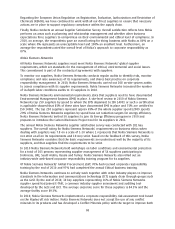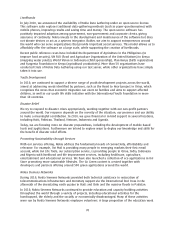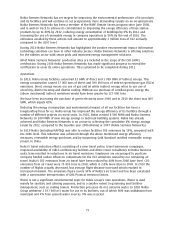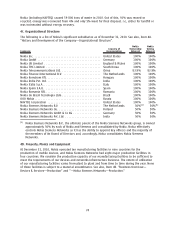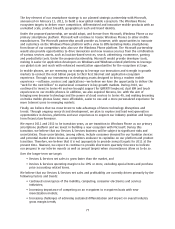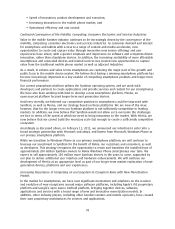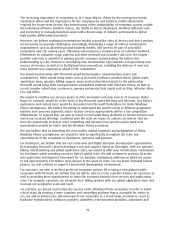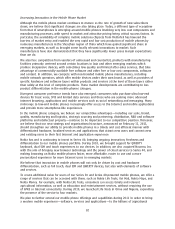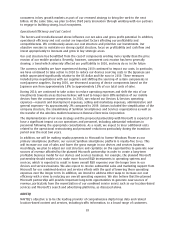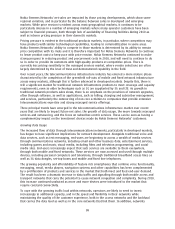Nokia 2010 Annual Report Download - page 79
Download and view the complete annual report
Please find page 79 of the 2010 Nokia annual report below. You can navigate through the pages in the report by either clicking on the pages listed below, or by using the keyword search tool below to find specific information within the annual report.• Speed of innovation, product development and execution;
• Increasing innovation in the mobile phone market; and
• Operational efficiency and cost control.
Continued Convergence of the Mobility, Computing, Consumer Electronics and Services Industries
Value in the mobile handset industry continues to be increasingly driven by the convergence of the
mobility, computing, consumer electronics and services industries. As consumer demand and interest
for smartphone and tablets with access to a range of content and media accelerates, new
opportunities to create and capture value through innovative new service offerings and user
experiences have arisen, with a greater emphasis and importance on software and ecosystemdriven
innovation, rather than standalone devices. In addition, the increasing availability of more affordable
smartphones and connected devices and related services has created new opportunities to capture
value from the traditional mobile phone market as well as adjacent industries.
As a result, in volume and value terms smartphones are capturing the major part of the growth and
public focus in the mobile device market. We believe that having a winning smartphone platform has
become increasingly important as a key enabler of compelling smartphone products and longerterm
financial performance.
Our current smartphone platform utilizes the Symbian operating system, and we work with
developers and partners to create applications and provide services and content for our smartphones.
We have also been working with Intel to develop a new smartphone platform, MeeGo, an
opensourced platform focused longerterm next generation devices.
Until very recently, we believed our competitive position in smartphones could be improved with
Symbian, as well as MeeGo, and our strategy based on those platforms. We are now of the view,
however, that for the longer term our Symbian platform is not sufficiently competitive in leading
markets. In addition, we now believe that Symbian would not allow us to overcome the challenges
we face in terms of the speed at which we need to bring innovation to the market. With MeeGo, we
now believe that we cannot build the necessary scale fast enough to create a sufficiently competitive
ecosystem.
Accordingly as discussed above, on February 11, 2011, we announced our intention to enter into a
broad strategic partnership with Microsoft and adopt, and license from Microsoft, Windows Phone as
our primary smartphone platform.
While we transition to Windows Phone as our primary smartphone platform, we will continue to
leverage our investment in Symbian for the benefit of Nokia, our customers and consumers, as well
as developers. This strategy recognizes the opportunity to retain and transition the installed base of
approximately 200 million Symbian owners to Nokia Windows Phone smartphones over time. We
expect to sell approximately 150 million more Symbian devices in the years to come, supported by
our plan to deliver additional user interface and hardware enhancements. We will continue our
development of MeeGo at an appropriate level as part of our longerterm market exploration of next
generation devices, platforms and user experiences.
Increasing Importance of Competing on an Ecosystem to Ecosystem Basis with New Monetization
Models
In the market for smartphones, we have seen significant momentum and emphasis on the creation
and evolution of new ecosystems around major software platforms, including Apple’s iOS proprietary
platform and Google’s open source Android platform, bringing together devices, software,
applications and services with a broad range of new and innovative monetization models. In
addition, other industry players, including other handset vendors and mobile operators, have created
their own proprietary marketplaces for services and applications.
78


